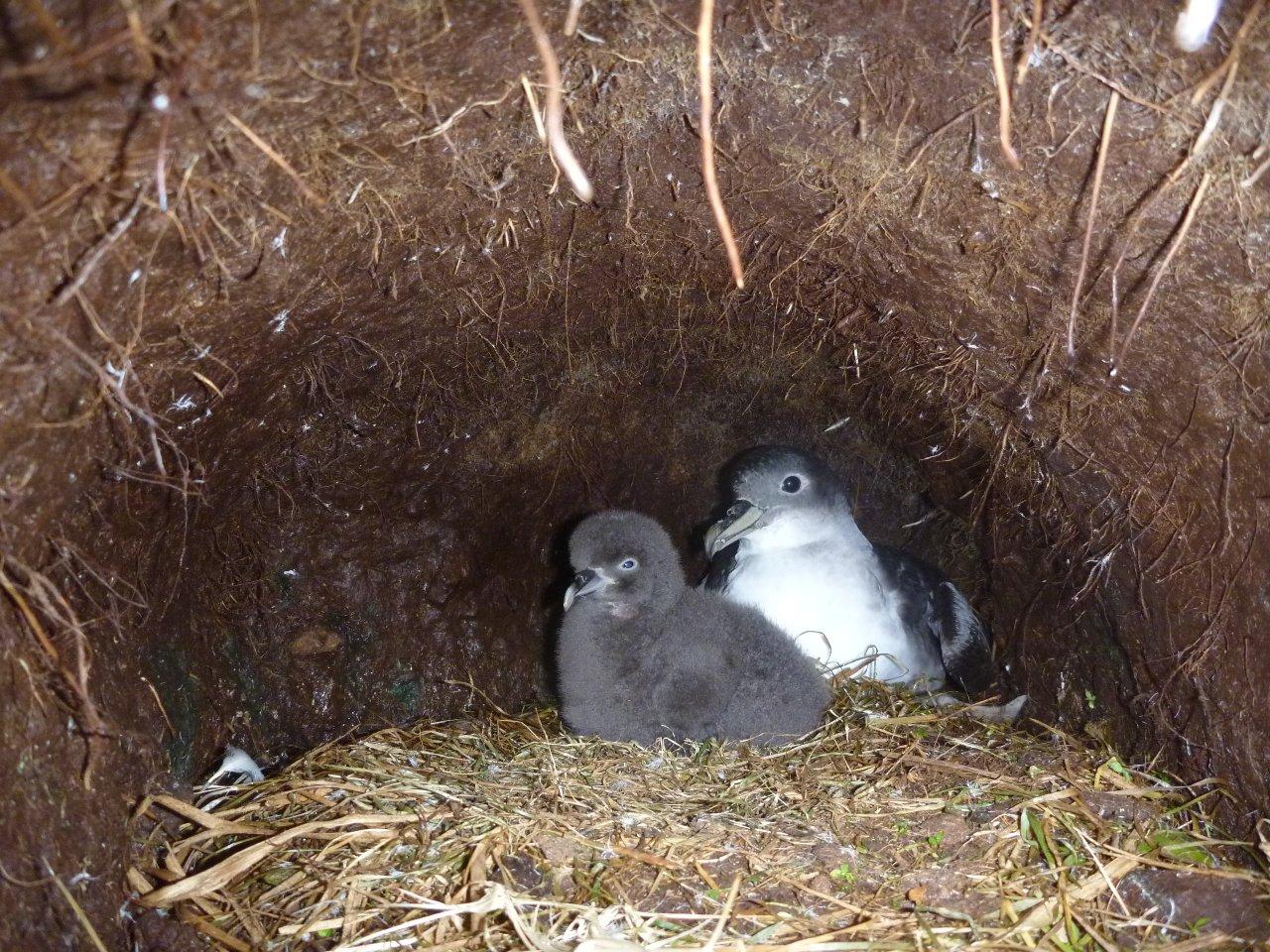
Grey Petrel and downy chick on Macquarie Island, photograph by Richard Deakin
Julie McInnes (Institute for Marine and Antarctic Studies, University of Tasmania, Battery Point, Tasmania, Australia) and colleagues have published in the journal Conservation Science and Practice on searching for the presence of burrowing petrels, including the Near Threatened and ACAP-listed Grey Petrel Procellaria cinerea, by DNA analyses of feathers and scats.
The paper’s abstract follows:
“Species inventories and biodiversity assessments are critical to conservation. Yet cryptic species or recolonizing species can be challenging to detect. DNA metabarcoding provides an alternative tool to identify species that can be difficult to observe during field surveys. We test the efficacy of DNA analysis to identify burrowing petrel species in a rapidly changing landscape, on a remote sub-Antarctic island following pest eradication. Discarded feathers and scats provided high quality DNA for species identification, assisting in detection of new species arrivals and new breeding sites across Macquarie Island. We highlight how DNA metabarcoding informs species inventories and is a valuable tool to complement seabird field surveys.”
Reference:
McInnes, J.C., Bird, J.P., Deagle, B.E., Polanowski, A.M. & Shaw, J.F. 2021. Using DNA metabarcoding to detect burrowing seabirds in a remote landscape. Conservation Science and Practice https://doi.org/10.1111/csp2.439.
John Cooper, ACAP Information Officer, 01 June 2021

 Français
Français  English
English  Español
Español